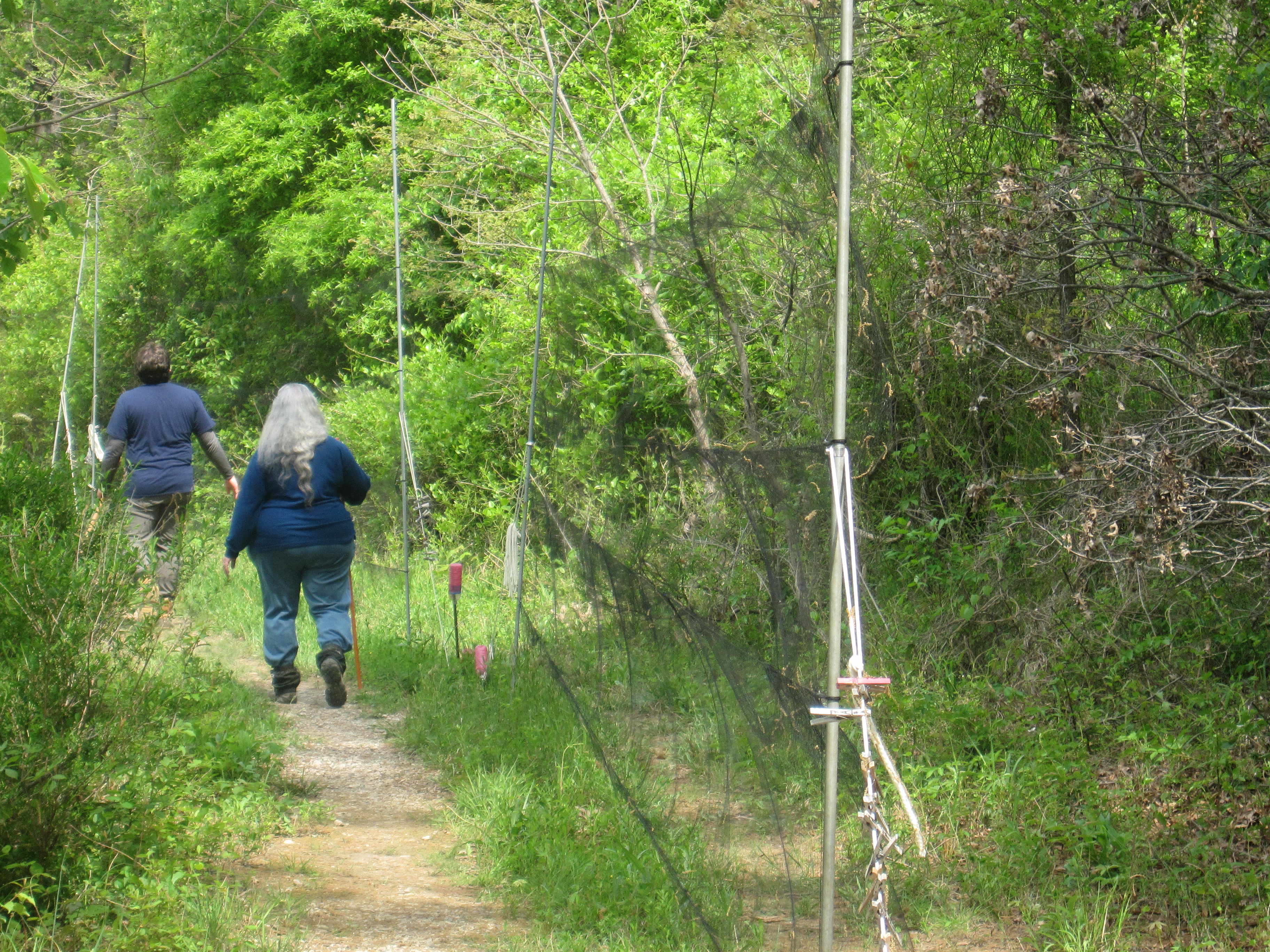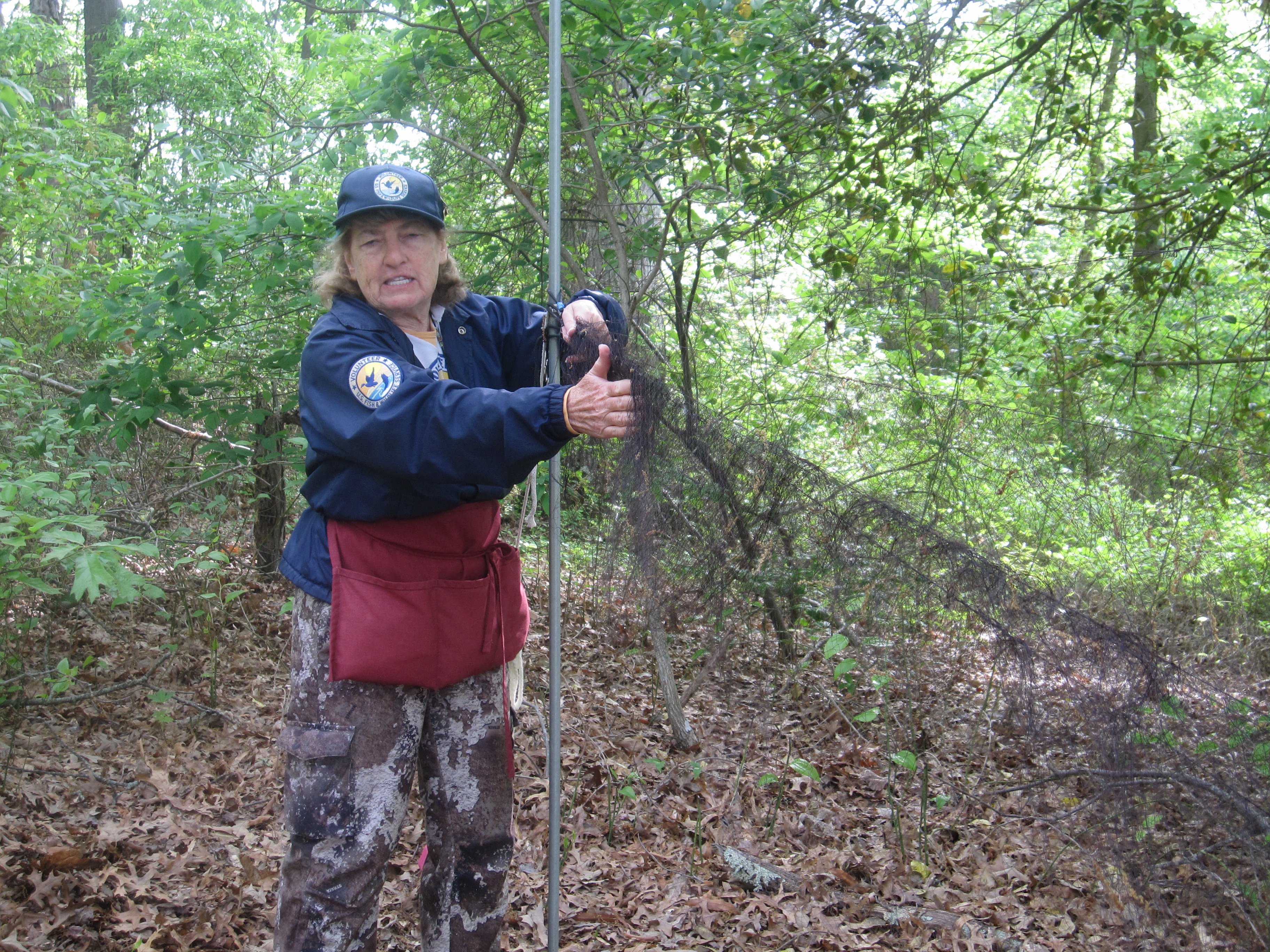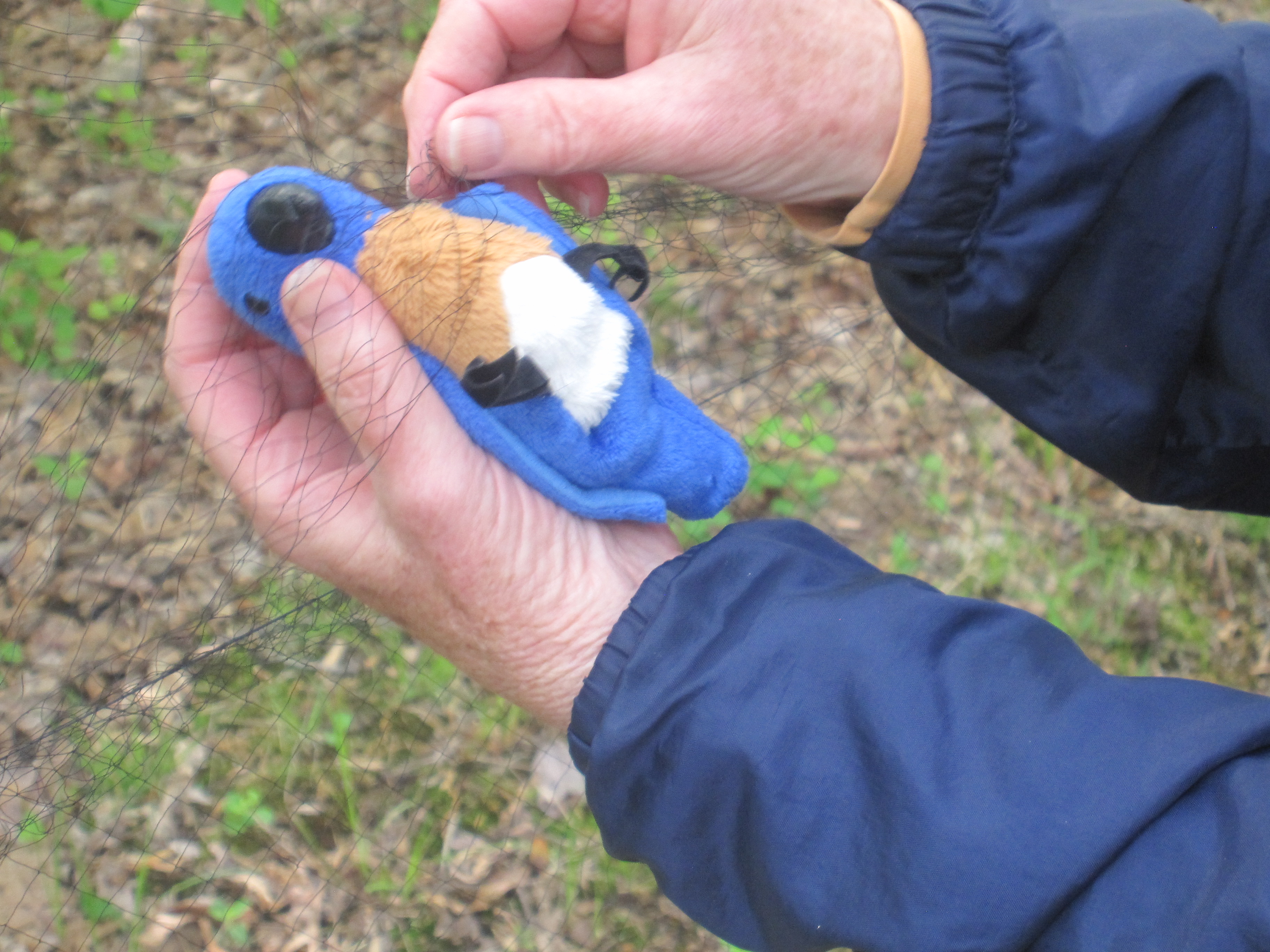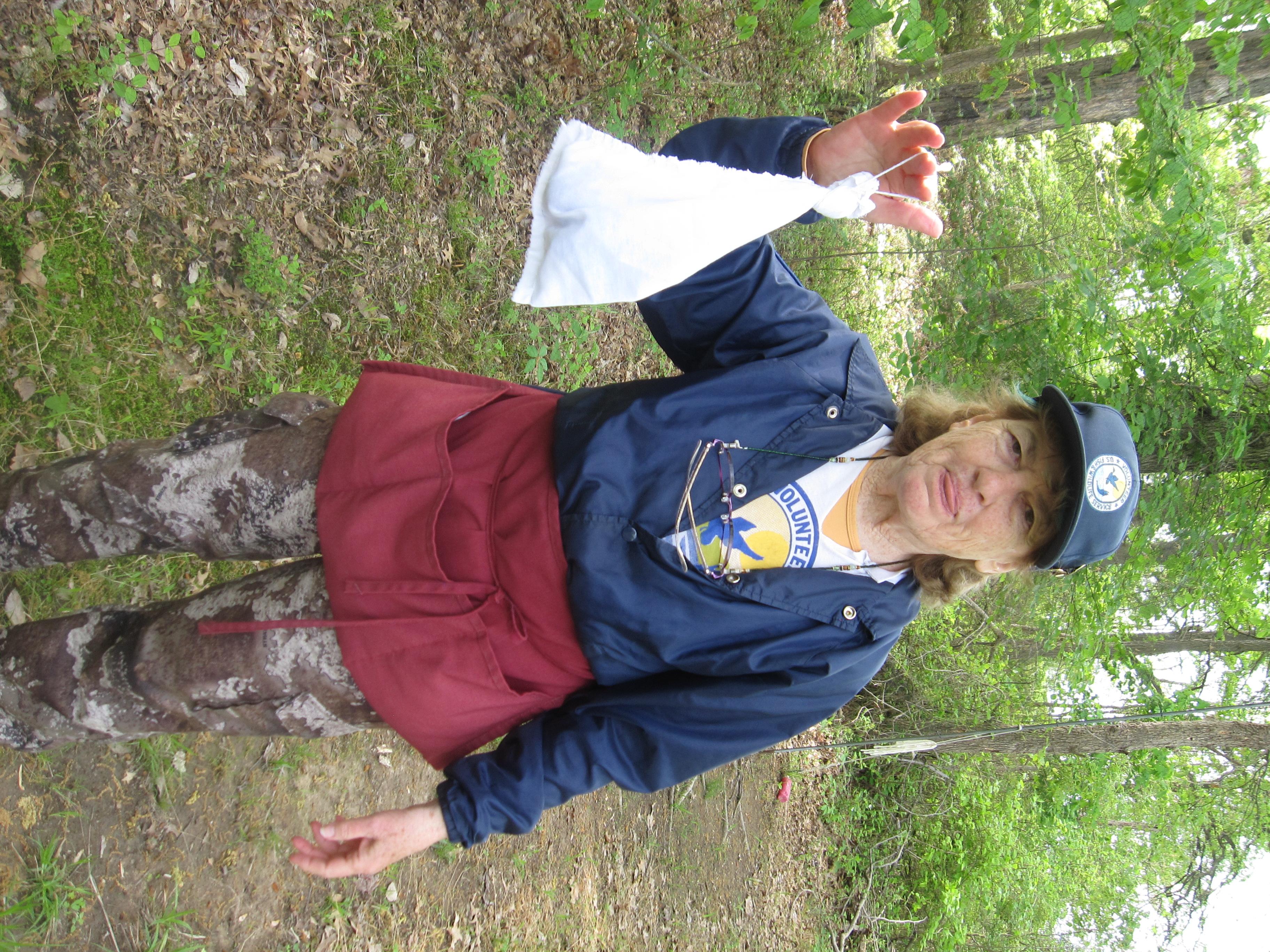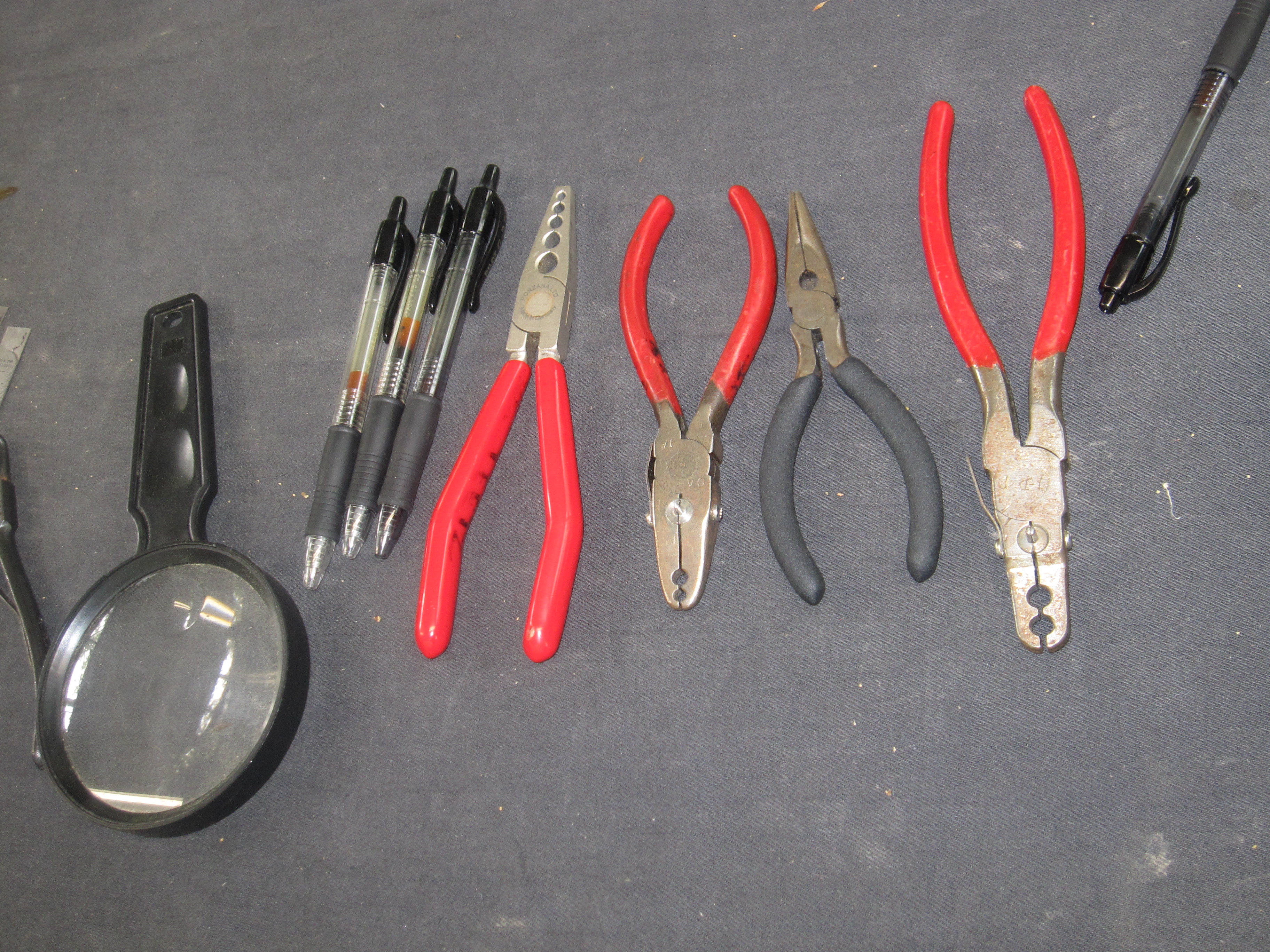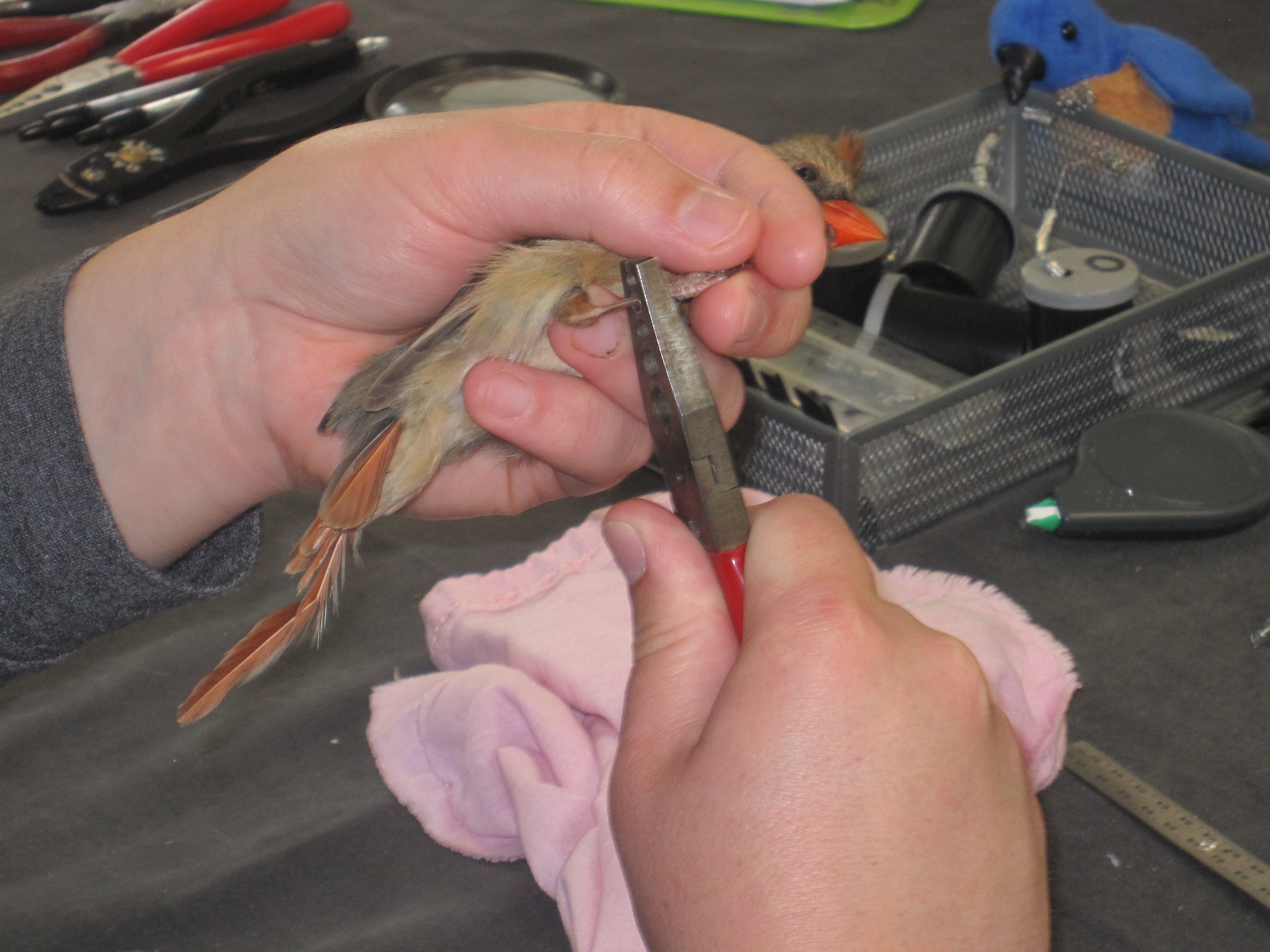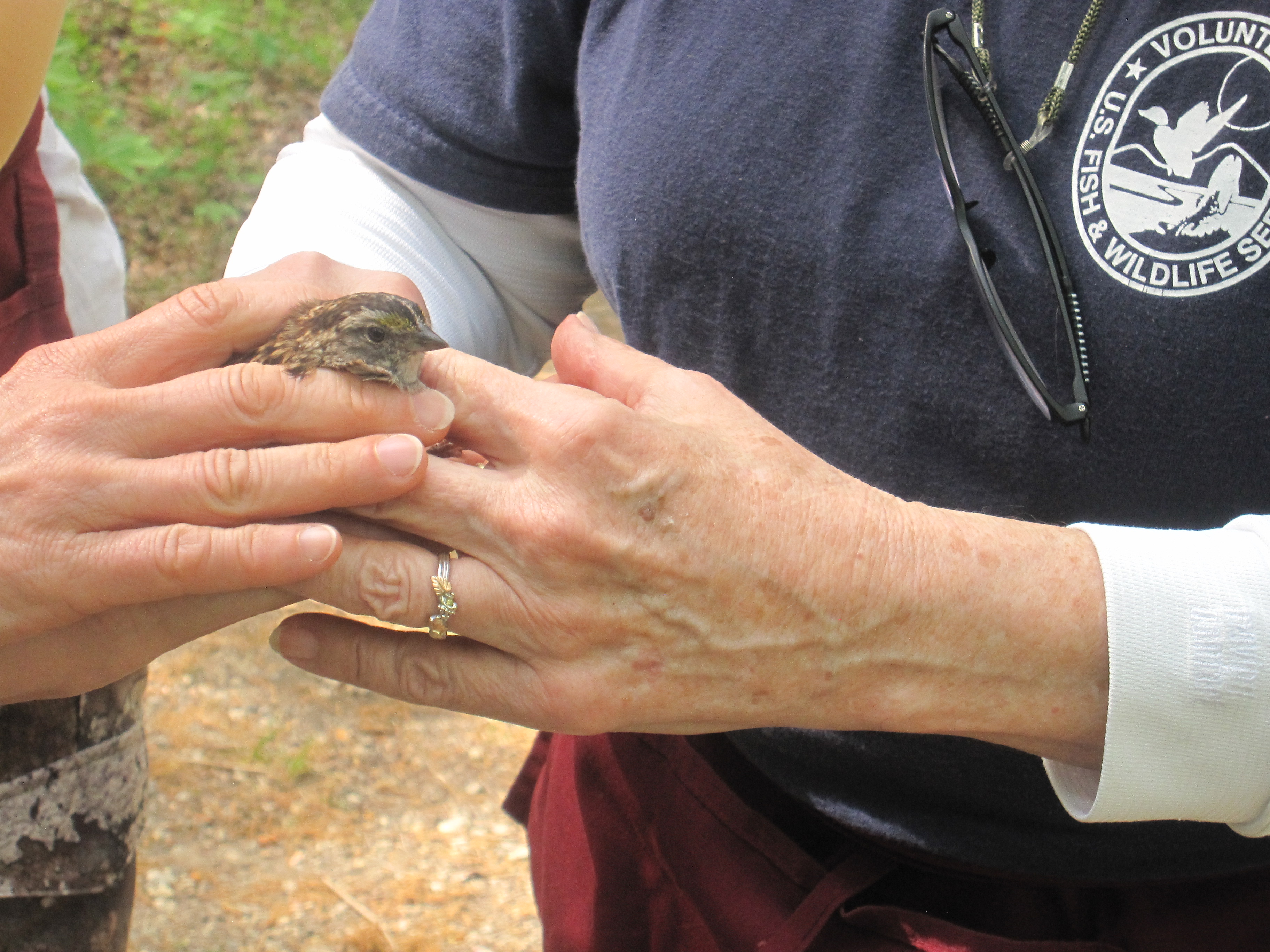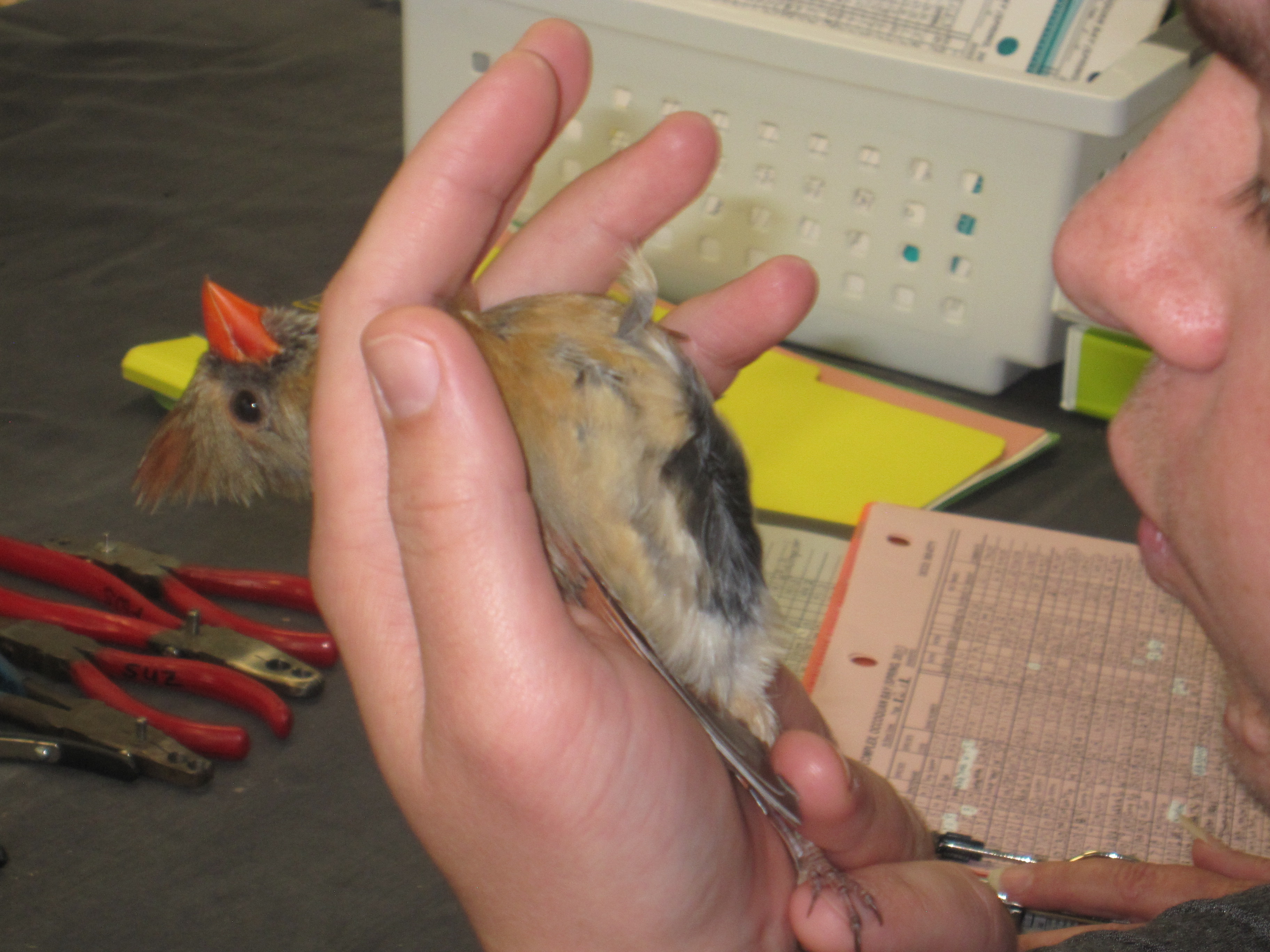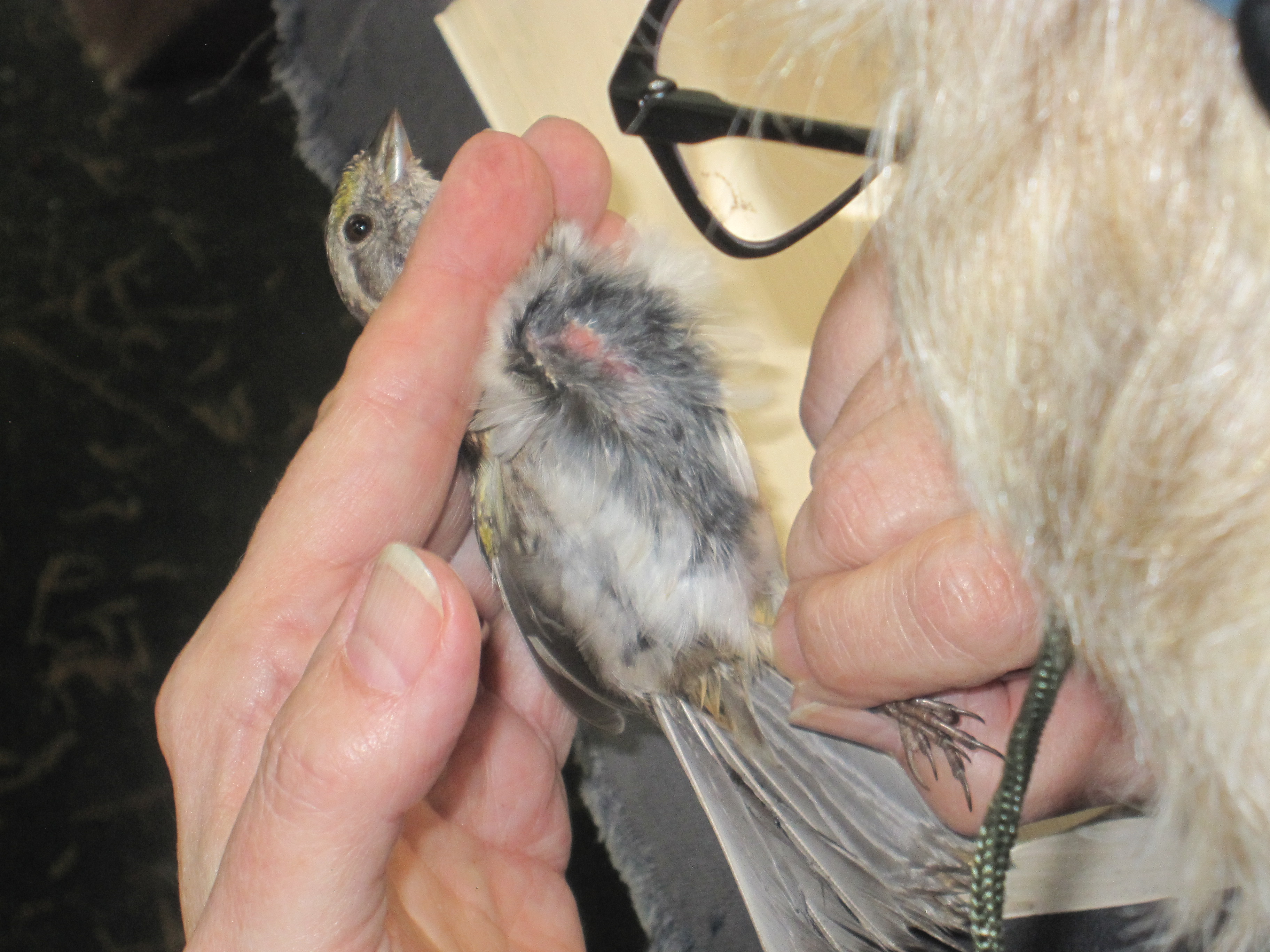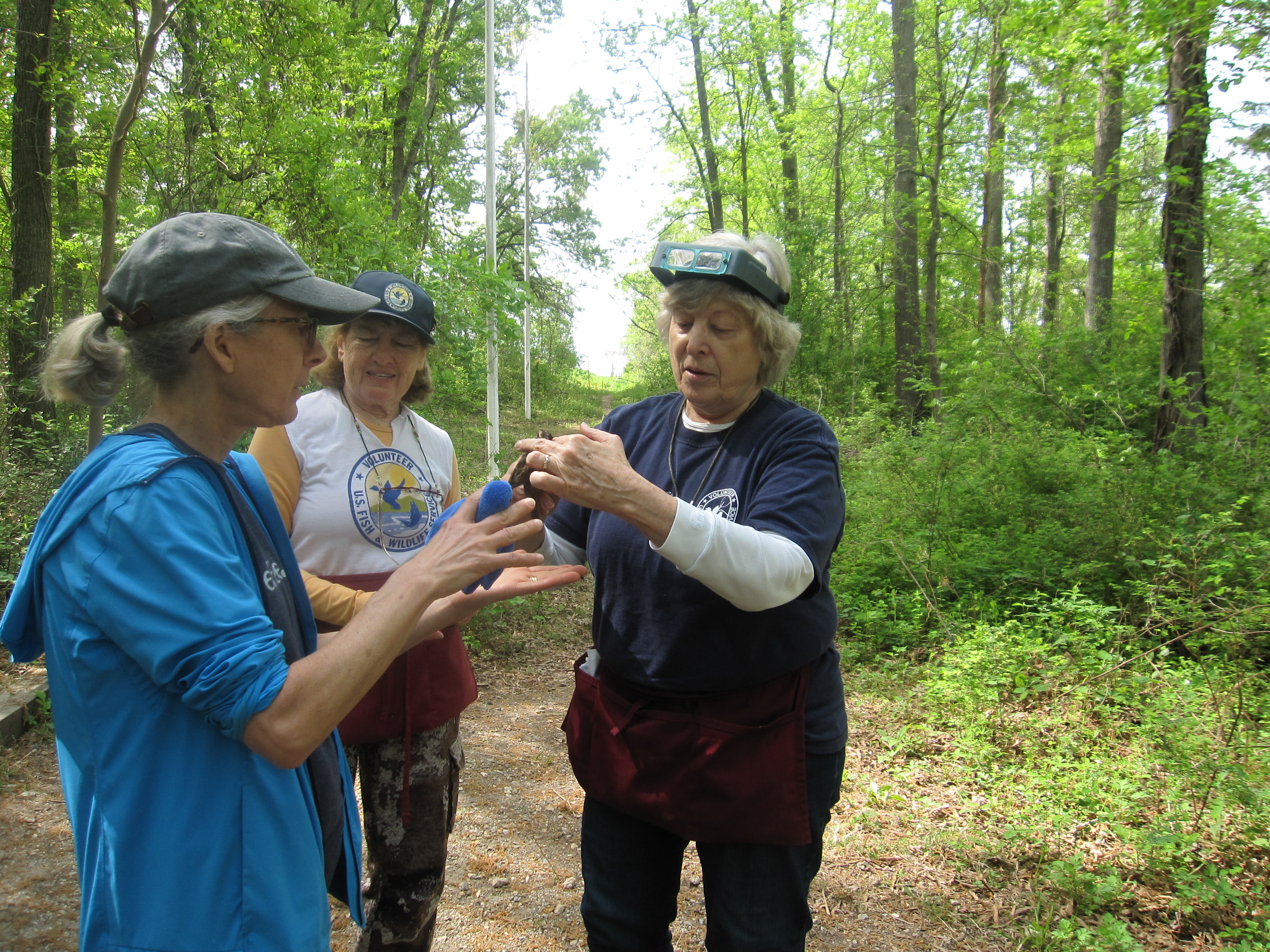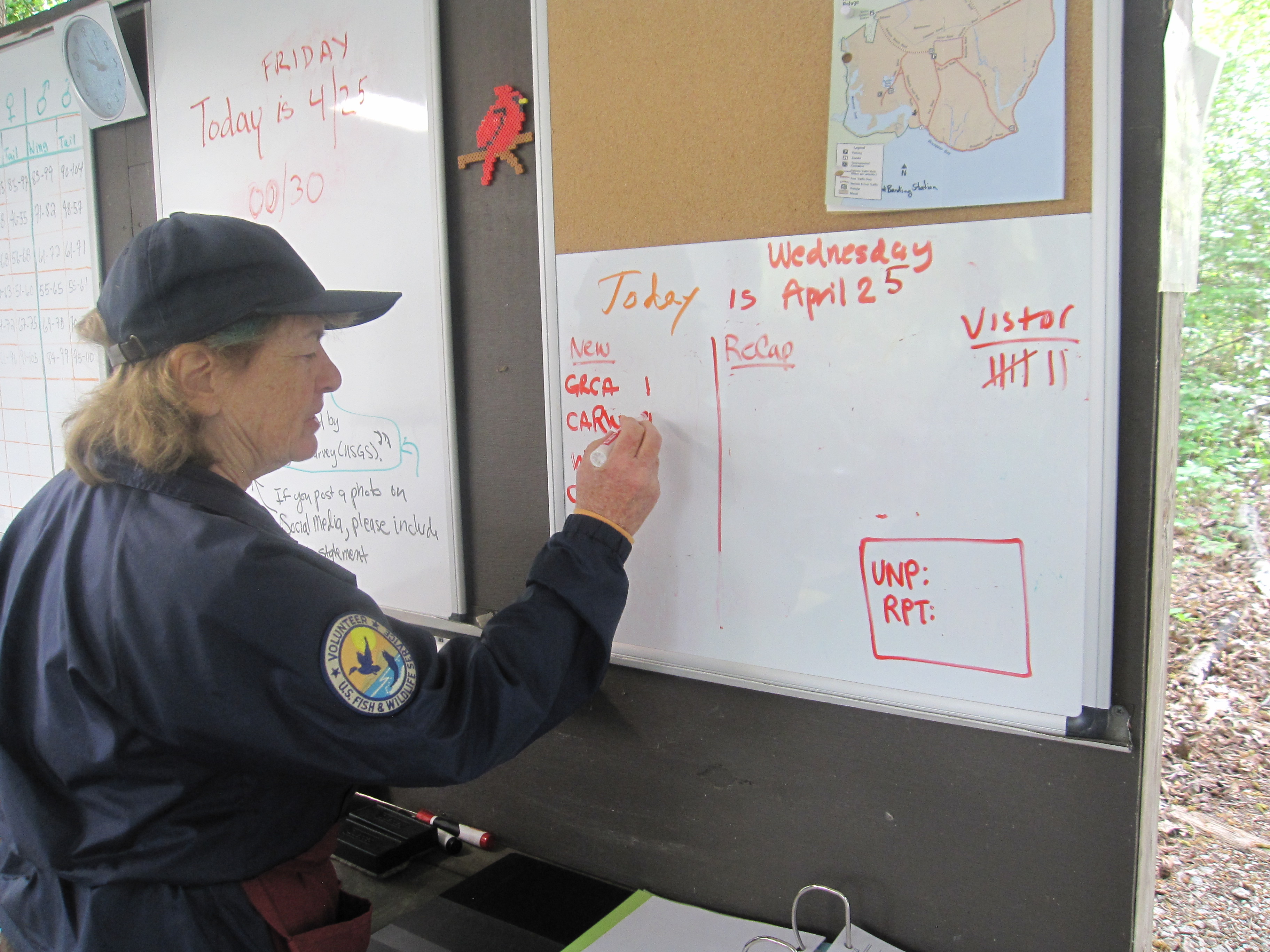The 1.4-ounce female Northern cardinal was squawking and squirming between Brian Rademacher’s fingers and then bit his hand, leaving a red mark, as he prepared to release her after putting a tiny metal band on her leg.
“The bite was like a severe pinch,” Rademacher said calmly. The agitated bird was what he called a “recapture.” She had been caught and banded there three weeks ago.
During spring migration’s height, in April and May, from 6 a.m. to noon, volunteers catch and band birds in the Occoquan National Wildlife Refuge near Marumsco Creek three mornings a week, a project undertaken there every spring since 2001, except 2020, the “covid year.”
They typically catch on average 20 to 30 birds in mist nets per six-hour stint, 500 per season. Their most commonly-banded bird is the white-throated sparrow.
Birdcast.info shows that by April 27, 45 million birds had crossed the region since early March. Birds migrate to find food and favorable climates, and to breed.
Factors like weather, wind, human disturbances and habitat, including conditions in their wintering grounds, can affect the numbers. “A calm, cold night without rain or a big headwind is ideal for migration,” said Suzanne Miller, the project’s leader. “Songbirds migrate at night, up high. Hawks migrate on thermals.”
Next Steps: Recording Data
The team follows Monitoring Avian Productivity and Survivorship protocols. They do not use seeds or audio lures. They check the black, very fine, barely visible nets every 30 minutes and if a bird is snared, carefully extract it. “It comes out of the side it went in on,” explained Miller, “to prevent breaking a wing or leg.”
Once in hand, they put the bird in a cloth bag and take it to the banding station where they measure the wings and tail length, weigh it and determine age and sex. The goal is to process the bird in around five minutes to minimize stress on the bird.
One step is to blow on the bird’s breast and belly to check three things, Paul Napier explained: (1) the brood patch where naked skin indicates the stage of the egg incubation cycle; (2) a cloacal protuberance that indicates breeding condition; and (3) fat, a sign of energy reserves.
The cloaca is the rear orifice or vent for the digestive, reproduction and urinary tracts. In male birds, if it is bulging like a pimple, the bird is in breeding condition. If a female has a protuberance, she likely has eggs. Minimal fat in birds could mean they spent a lot of energy traveling. Fat accumulation could indicate a healthy habitat, abundant in insects, grubs and inchworms, for example.
Among other data, volunteers record recaptures. Miller said that since 2001, out of 652 cardinals, they have recaptured 74 or 11.3 percent. Cardinals are non-migratory, resident birds in Northern Virginia.
“They don’t go far from where they hatched,” Miller said. The recapture statistics can help determine a bird’s age. All data go to the U.S. Geological Survey Bird Banding Laboratory. Scientists use data to analyze bird behavior, population, distribution, survival rates and other factors.
Napier, a Falls Church resident, heads the Cape May (New Jersey) Raptor Banding Project and says that every time he bands a bird he learns something new. He has banded raptors since 1988 and songbirds since 2005.
Beverly Arnold drives up from Fredericksburg to band. “It’s a labor of love. I’m contributing to citizen science,” she said.
Janet Martin from Springfield said, “It’s so cool.”
Banding is controlled by federal and state laws that require permits because it involves capturing and handling birds. All of this team’s banding, marking and sampling is conducted under a federally-authorized bird banding permit issued by the U.S. Geological Survey. The refuge also has a Virginia and U.S. Fish and Wildlife Service permit.
The one-square-mile Occoquan Bay National Wildlife Refuge at the mouth of the Occoquan River on Belmont Bay has tidal marshes, grassland and forest, and four miles of trails. Observers have documented over 650 plant and 200 bird species.
The banding station is open to the public from 7 a.m. to 12 noon until Memorial Day weekend. Groups larger than 10 people need a permit. Visit https://www.fws.gov/refuge/occoquan-bay/about-us .
To learn how many birds migrated through an area last night, visit https://birdcast.info/.
Photos by Glenda Booth
The banding station
Janet Martin and Brian Rademacher head out to check the nets.
Suzanne Mlller adjusts one of the 17 nets.
Suzanne Miller uses a fake stuffed bluebird to train people on extracting birds from mist nets.
Banders use a cloth bag to take the extracted bird to the station.
Banding tools
Brian Rademacher uses the bander’s grip to hold this female northern cardinal.
Brian Rademacher put a metal band on the cardinal.
Brian Rademacher said the unhappy cardinal’s bite was like a “severe pinch.”
Bev Arnold showed a visitor the bander’s grip on a white-throated sparrow.
Banders blow on birds’ bellies to study their anatomy.
Bev Arnold explained to a visitor that she should make a “platform” with her hand for the bird to stand on before flying away.
Suzanne Miller records bird species captured each day.
Marumsco Creek is filled with spatterdock, a wetland plant, in the spring.


